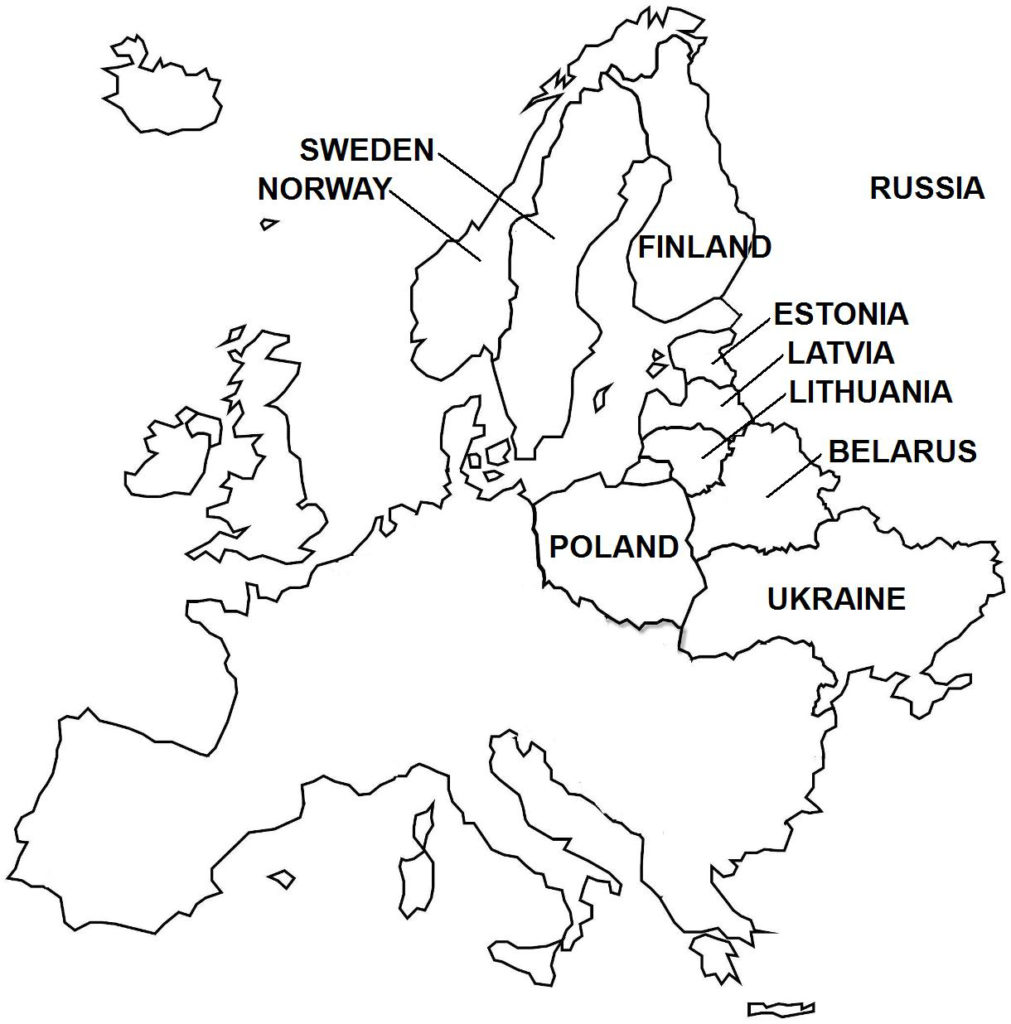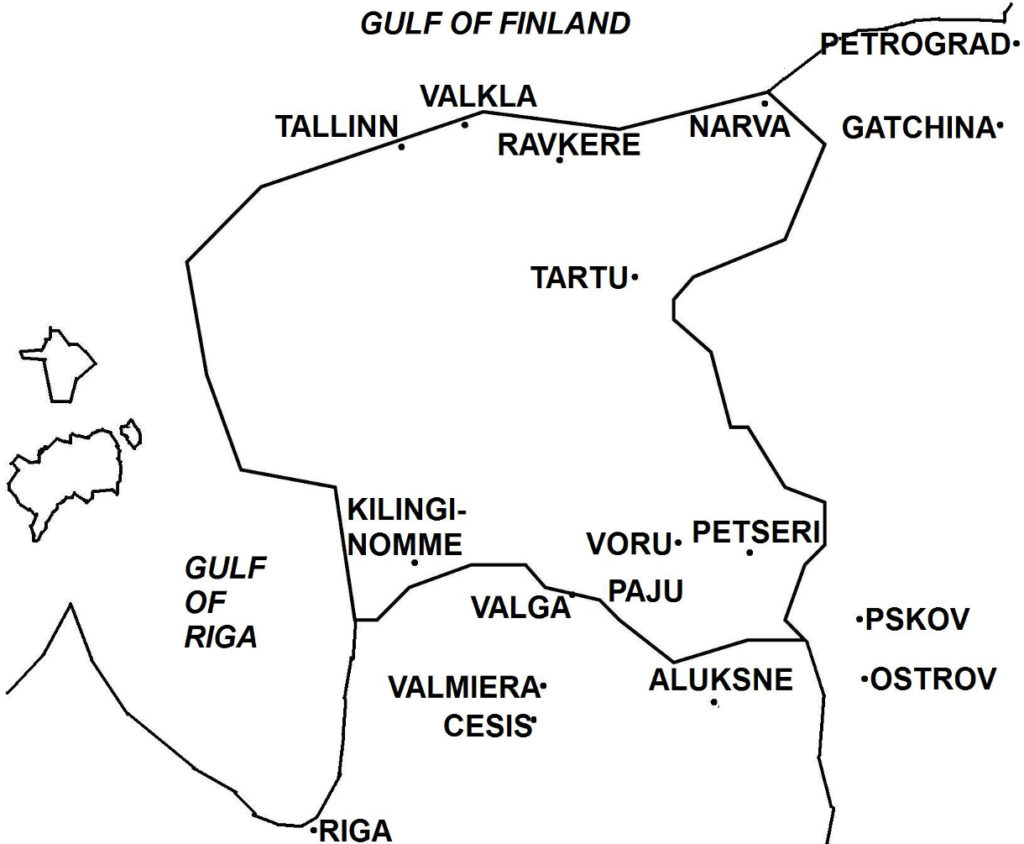On June 23, 1919, The Estonian Third Division, aided by Latvian forces, wrested control of Cēsis from the retreating Baltische Landeswehr and German forces. The Estonians and Latvians then continued in pursuit in the direction of the Latvian capital Riga.
The Estonian War of Independence (November 1918-February 1920) broke out at the end of World War I when the newly declared Estonian state came into armed conflict with the Soviet Red Army that invaded to re-establish Russian control over the territory. With the support of Latvia (which was also concurrently engaged in its own independence war, as well as Britain and other Western nations), the fledging Estonian Army also battled against the Baltische Landeswehr (militias of the Baltic German nobility) and the Freikorps (German Army volunteers/mercenaries).

Background The two revolutions in Russia in 1917 as well as ongoing events in World War I catalyzed ethnic minorities across the Russia Empire, resulting in the various regional nationalist movements pushing forward their objective of seceding from Russia and forming new independent nation-states. In the western and northern regions of the empire, the subject territories of Poland, Belarus, Ukraine, Lithuania, Latvia, Estonia, and Finland moved toward independence.

On March 30, 1917, one month after the first (February 1917) revolution, Russia’s Provisional Government granted political autonomy to Estonia after merging the Governorate (province) of Estonia and the ethnic Estonian northern portion of the Governorate of Livonia into the political and administrative entity known as the “Autonomous Governorate of Estonia”. An interim body, the Estonian Provincial Assembly (Estonian: Maapäev), was elected with the task of administering the new governorate. Furthermore, the Bolsheviks, on coming to power through the October Revolution, issued the “Declaration of the Rights of the Peoples of Russia” (on November 15, 1917), which granted all non-Russian peoples of the former Russian Empire the right to secede from Russia and establish their own separate states. Eventually, the Bolsheviks would renege on this edict and suppress secession from the Russian state (now known as Russian Soviet Federative Socialist Republic, or RSFSR).
The Provisional Assembly of the Estonian Governorate, determined to implement a democratic form of government, declared itself as the supreme authority in Estonia, which effectively was an act of secession. However, on November 5, 1917, local Estonian Bolsheviks led by Jaan Anvelt seized power in a coup in Tallinn, Estonia’s capital, forcing the Estonian nationalists to disperse and operate clandestinely. Meanwhile in Soviet Russia, the Bolsheviks, whose revolution had succeeded partly on their promises to a war-weary citizenry and military to disengage from World War I, declared its pacifist intentions to the Central Powers. A ceasefire agreement was signed on December 15, 1917 and peace talks began a few days later in Brest-Litovsk (present-day Brest, in Belarus).
The Provisional Assembly of the Estonian Governorate, determined to implement a democratic form of government, declared itself as the supreme authority in Estonia, which effectively was an act of secession. However, on November 5, 1917, local Estonian Bolsheviks led by Jaan Anvelt seized power in a coup in Tallinn, Estonia’s capital, forcing the Estonian nationalists to disperse and operate clandestinely. Meanwhile in Soviet Russia, the Bolsheviks, whose revolution had succeeded partly on their promises to a war-weary citizenry and military to disengage from World War I, declared its pacifist intentions to the Central Powers. A ceasefire agreement was signed on December 15, 1917 and peace talks began a few days later in Brest-Litovsk (present-day Brest, in Belarus).
However, the Central Powers imposed territorial demands that the Russian government deemed excessive. On February 17, 1918, the Central Powers repudiated the ceasefire agreement, and the following day, Germany and Austria-Hungary restarted hostilities against Russia, launching a massive offensive with one million troops in 53 divisions along three fronts that swept through western Russia and captured Ukraine Belarus, Lithuania, Latvia, and Estonia. German forces also entered Finland, aiding the non-socialist paramilitary group known as the “White Guards” in defeating the socialist militia known as “Red Guards” in the Finnish Civil War. Eleven days into the offensive, the northern front of the German advance was some 85 miles from the Russian capital of Petrograd (on March 12, 1918, the Russian government transferred its capital to Moscow).
On February 23, 1918, or five days into the offensive, peace talks were restarted at Brest-Litovsk, with the Central Powers demanding from Russia even greater territorial and military concessions than in the December 1917 negotiations. After heated debates among members of the Council of People’s Commissars (the highest Russian governmental body) who were undecided whether to continue or end the war, at the urging of its Chairman, Vladimir Lenin, the Russian government acquiesced to the Treaty of Brest-Litovsk. On March 3, 1918, Russian and Central Powers representatives signed the treaty, whose major stipulations included the following: peace was restored between Russia and the Central Powers; Russia relinquished possession of Finland (which was engaged in a civil war), Belarus, Ukraine, and the Baltic territories of Estonia, Latvia, and Lithuania – Germany and Austria-Hungary were to determine the future of these territories; and Russia also agreed on some territorial concessions to the Ottoman Empire.
In the midst of the German offensive, on February 24, 1918, Russian forces withdrew from Estonia and the local Estonian Bolshevik government collapsed. That same day, the Estonian Provincial Assembly emerged from hiding and reconvened; through its newly formed executive body, the Salvation Committee, it declared Estonia’s independence in Tallinn and then formed a provisional government. However, the next day, February 24, German forces entered Tallinn, bringing Estonia under German military occupation, and forcing Estonia’s provisional government to return underground. Estonia’s one day-old status was an independent state thus ended.
German forces occupied Estonia, Latvia, Lithuania, Belarus, Ukraine, and Poland, establishing semi-autonomous governments in these territories that were subordinate to the authority of the German monarch, Kaiser Wilhelm II. The German occupation allowed the realization of the Germanic vision of “Mitteleuropa”, an expansionist ambition that sought unification of Germanic and non-Germanic peoples of Central Europe into a greatly enlarged and powerful German Empire. In support of Mitteleuropa, in the Baltic region, the Baltic German nobility proposed to set up the United Baltic Duchy, a semi-autonomous political entity consisting of (present-day) Estonia and Latvia that would be voluntarily integrated into the German Empire. The proposal was not implemented, but German military authorities set up local civil governments under the authority of the Baltic German nobility or ethnic Germans.
Although the Treaty of Brest-Litovsk in March 1918 ended Russia’s participation in World War I, the war was still ongoing in other fronts – most notably on the Western Front, where for four years, German forces were bogged down in inconclusive warfare against the British, French and other Allied Armies. After transferring substantial numbers of now freed troops from the Russian front to the Western Front, in March 1918, Germany launched the Spring Offensive, a major offensive into France and Belgium in an effort to bring the war to an end. After four months of fighting, by July 1918, despite achieving some territorial gains, the German offensive had ground to a halt.
The Allied Powers then counterattacked with newly developed battle tactics and weapons and gradually pushed back the now spent and demoralized German Army all across the line into German territory. The entry of the United States into the war on the Allied side was decisive, as increasing numbers of arriving American troops with the backing of the U.S. weapons-producing industrial power contrasted sharply with the greatly depleted war resources of both the Entente and Central Powers. The imminent collapse of the German Army was greatly exacerbated by the outbreak of political and social unrest at the home front (the German Revolution of 1918-1919), leading to the sudden end of the German monarchy with the abdication of Kaiser Wilhelm II on November 9, 1918 and the establishment of an interim government (under moderate socialist Friedrich Ebert), which quickly signed an armistice with the Allied Powers on November 11, 1918 that ended the combat phase of World War I.
As the armistice agreement required that Germany demobilize the bulk of its armed forces as well as withdraw the same to the confines of the German borders within 30 days, the German government ordered its forces to abandon the occupied territories that had been won in the Eastern Front. Consequently, in Estonia, German authorities turned over governmental powers to the Estonian provisional government; the latter restarted organizing a national armed forces (which had begun in April 1917 but was aborted by the German invasion), now urgently needed because of the buildup of Soviet forces at the Estonian border.
After Germany’s capitulation in November 1918, Russia repudiated the Treaty of Brest-Litovsk and made plans to seize the European territories it previously had lost to the Central Powers. An even far more reaching objective was for the Bolshevik government to spread the communist revolution to Europe, first by linking up with German communists who were at the forefront of the unrest that currently was gripping Germany. Russian military planners intended the offensive to merely follow in the heels of the German withdrawal from Eastern Europe (i.e. to not directly engage the Germans in combat) and then seize as much territory before the various ethnic nationalist groups in these territories could establish and consolidate a civilian government.
Starting on November 28, 1918, in the action known as the Soviet westward offensive of 1918-1919, Soviet forces consisting of hundreds of thousands of troops advanced in a multi-pronged offensive toward the Baltic region, Belarus, Poland, and Ukraine (Excerpts taken from Wars of the 20th Century – Volume 4).
